When it comes to front gardens, bigger is not always better. In fact, for many homeowners, small front gardens are the way to go. They require less maintenance and are often more affordable to create and maintain. If you’re looking for ideas on how to make the most of a tiny front garden, you’ve come to the right place! This article will share some tips and ideas that will help you transform your small space into a beautiful and functional front garden.
What is a small front garden?
A small front garden is a type of outdoor space that is usually located at the front of a residence. It typically features plants, flowers, shrubs, and trees that are selected to provide visual interest and beauty while also providing practical benefits such as increased privacy or noise reduction.
Small front gardens may also feature hardscaping elements like paths, patios, seating areas, water features, and other decorative elements to further enhance their aesthetic appeal. They are often used for entertaining guests or simply as an extension of the homeowner’s living space. In some cases, small front gardens can even serve as an extension of one’s home office or workspace. Whatever their purpose, small front gardens can be designed in a variety of ways to suit the individual needs and tastes of the homeowner.
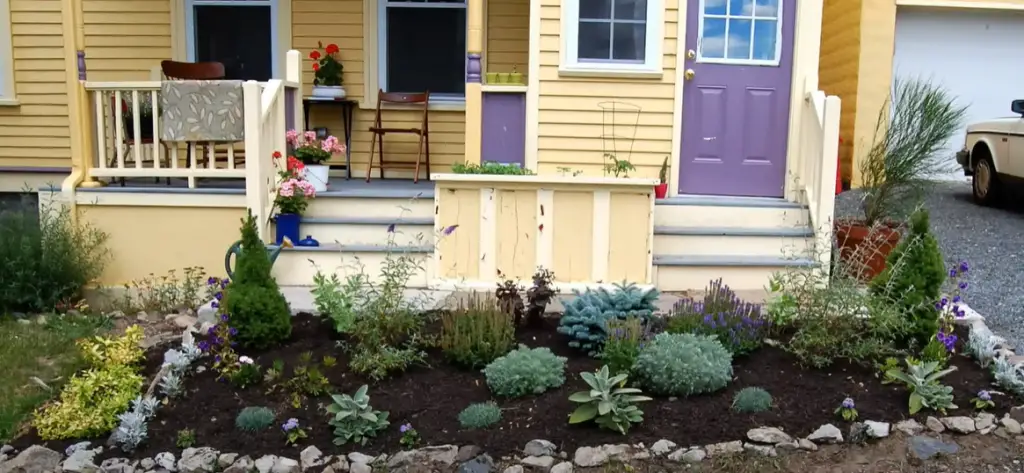
How to Design a Small Front Garden
Designing a small front garden can be an exciting opportunity for homeowners to express their style and creativity. Here are some tips to get started:
- Determine what type of plants, trees, shrubs, flowers, or other greenery you would like to include in your landscape. Consider factors such as size, sun exposure, and seasonal changes that may affect their growth.
- Decide on any hardscaping elements you wish to incorporate into your design such as pathways, patios, seating areas, water features, or other decorative elements.
- Choose an overall color palette for your garden by selecting colored mulch, plants with colorful blooms, or other decorative elements.
- Create a budget for your project and stick to it.
- Research local landscaping regulations and be sure to get permits if needed before beginning any construction.
- Use sustainable gardening practices such as drip irrigation or xeriscaping to conserve water usage when possible [1].
Small front garden ideas
Plant up hanging baskets
Hanging baskets are a great way to add color, texture, and interest to small front gardens. Filled with trailing plants, they can cascade down from roof eaves or wall tops and create an eye-catching display. Choose from a variety of bright flowers such as petunias, begonias, and violas for maximum impact.
Create a feature path
A curving pathway made from gravel or paving slabs is an effective way of creating visual interest in the garden without taking up much space. This can lead to the main entrance door or even just provide an area where you can enjoy spending time outside on sunny days.
Create shade and privacy with a small tree
Trees are often used in larger gardens to provide shade and privacy, but they can be equally effective in small spaces. Look for slow-growing varieties that don’t get too large. Small trees such as Japanese maple, Amelanchier, or Magnolia are all good options. Additionally, they will provide seasonal interest with their changing foliage and flowers.
Grow in tiers
If you’re short on space but still want to make the most of it, consider growing plants in tiers. Use a trellis as a back wall for climbing plants such as honeysuckle or clematis, and then create more levels using raised beds or planters for shrubs and perennials. This can help to maximize the area’s potential without taking up too much room.
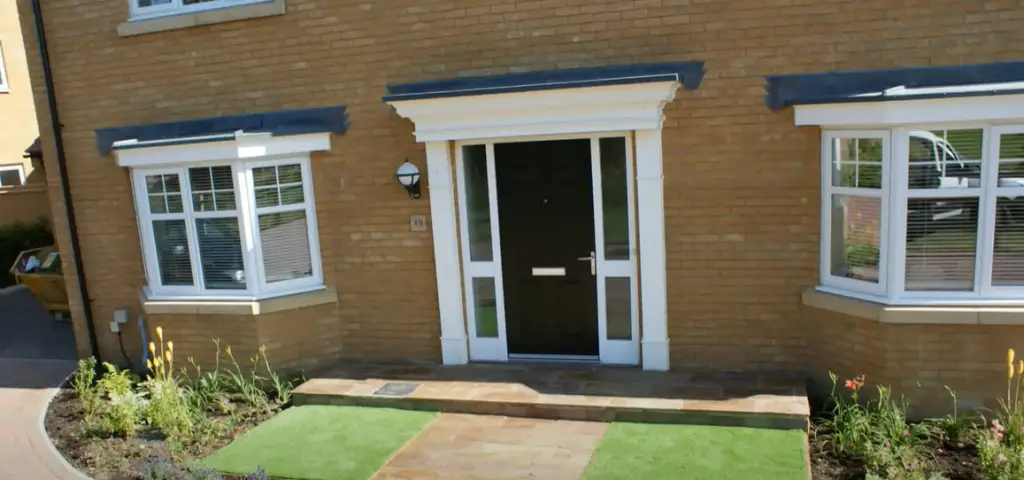
Add a low picket fence
A small picket fence can provide a decorative border for the garden, as well as provide security and some protection from passersby. It can also be used to divide up the space into different areas, such as a seating area or a small lawn. Choose a design that complements the house’s style for the best results.
Install lighting
Lighting is an important element in any outdoor space, especially small ones. Place lights along pathways or use wall-mounted fixtures to highlight plants, water features, and other features in your garden. Solar lighting is perfect for small gardens because it requires no wiring and looks attractive during the day too. Additionally, adding landscape lighting will create a warm glow at night which encourages you to spend time outdoors.
Use vertical space
Vertical gardens are a great way to make the most of a small front garden. Hang planters or baskets filled with cascading plants on walls and fences, or use trellises and obelisks to support climbers or shrubs. These will take up little ground space but still provide visual interest and greenery.
Plant up a window box
Window boxes are a great way to add color and texture to small front gardens. They’re usually made from wood or PVC and can be filled with a variety of plants, including trailing varieties such as ivy, petunias, and lobelia. You can even create your own window box using wooden boards or metal planters.
Introduce drama with ornamental grasses
Ornamental grasses are a great way to add texture, movement, and interest to small front gardens. They’re low maintenance and come in a variety of shapes and sizes, so you can find something that fits your space perfectly. Choose from varieties such as Blue Oat grass or Feather Reed Grass for maximum impact.
Create focal points
Small front gardens benefit from the addition of eye-catching focal points that draw the eye and create interest. These could be anything from a colorful sculpture or an attractive water feature to lighting fixtures or plants with bold foliage. Use these elements to draw attention away from any potential flaws in the garden and create a beautiful outdoor space.
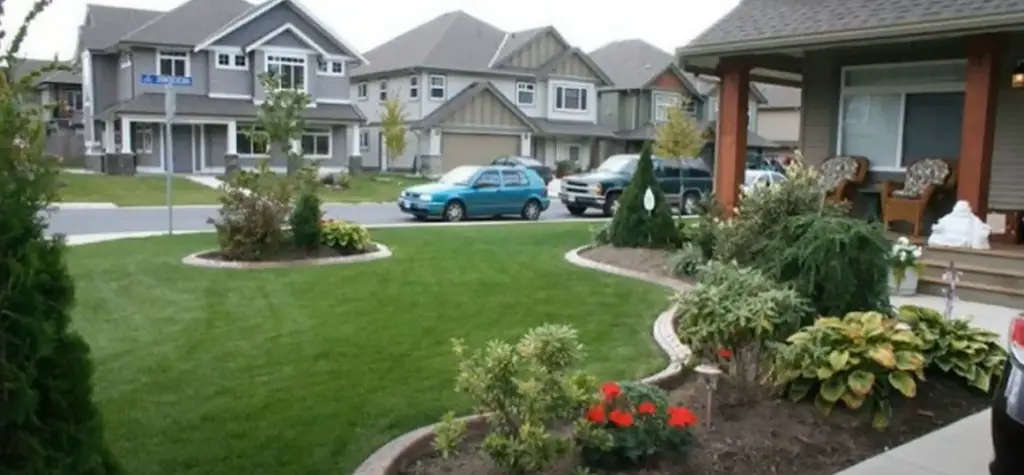
Add impact with climbing plants – without taking up ground space
Climbing plants are perfect for small front gardens because they use the vertical space to maximum effect without taking up any ground room. These include clematis, wisteria, and climbing roses. Choose a variety that will bloom during different times of the year so you can enjoy its beauty throughout the seasons.
No grass? Balance pebbles, planting, and paving
If the grass isn’t an option in your small front garden, replace it with paving, pebbles, or a combination of both. This will provide a hard surface that can be used for seating and entertaining as well as adding visual interest. Scatter plants around the area to create pockets of green and introduce pops of color.
Incorporate edibles
Edible plants are a great way to add flavor to your small front garden while also providing nutritious food. Try planting herbs such as mint and thyme in window boxes or containers, or even include fruit trees such as citrus if there’s enough space. This is a great way to make use of every inch of the garden while having easy access to fresh produce.
Soften fences with hedges and climbers
Use plants to soften the harsh look of fences and walls. Evergreen climbers such as jasmine or ivy will provide year-round interest while hedges are great for forming boundaries. Choose a variety that provides attractive foliage as well as blooms if possible, so you can enjoy your small front garden all year round.
Create interest with stepped levels
Introducing two or more levels in your small front garden will help to add depth and create interest. Use different materials such as paving or stone for each level, and then use plants and other features to fill the space. This will provide a stunning visual effect that makes the most of every inch of your outdoor space.
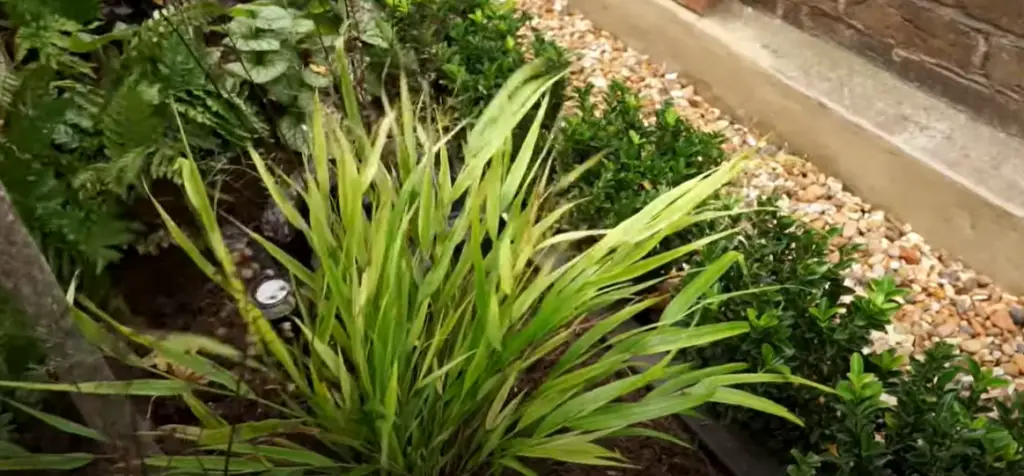
Prune statement topiary for low-maintenance luxury
Topiary can be used to create a stunning feature in small front gardens. Choose an evergreen shrub such as a box or yew and then use clips or string to train it into shapes such as spirals, cones, or animals. Pruning topiary is a low-maintenance way to add luxury and drama to your garden without taking up too much space.
Ditch your narrow path to make a small front garden feel bigger
A narrow path can make a small front garden feel cramped and cluttered. Instead, opt for a wider path that allows you to move freely around the garden and enjoy different aspects of it from different angles. This will help to create the illusion of more space and give your garden an added sense of grandeur.
Keep it compact with planters
Planters are a great way to introduce plants and texture into small front gardens without taking up too much space. Choose varieties that are easy to maintain yet still provide impacts, such as succulents or ornamental grasses. This is also an opportunity to create interest by mixing and matching different planter shapes and colors.
Plant across three levels to make the most of your space
If you’re looking for a way to create depth and impact in your small front garden, try planting across three levels. For example, put herbs and vegetables at ground level, climbers or flowering shrubs at mid-level, and trees or tall grasses at the highest level. This will provide a layered effect that makes the most of every inch of outdoor space.
Choose colors carefully for maximum impact
Color is an important element to consider when designing small front gardens. Aim to introduce a range of soft tones as well as bright pops of color – this will help to draw the eye around the garden and create a sense of energy without taking up too much room.
Introduce lighting to create an inviting garden
Lighting can be a great way to bring your small front garden to life after dark. Hang string lights between trees or install spotlights at ground level – this will create an inviting atmosphere and make the most of your outdoor space.
Add a water feature for added interest
A water feature can be a great way to add movement and sound to your small front garden. Choose one that is easy to maintain such as a fountain or pond, then use plants and other features around it to create even more interest. This is sure to attract birds and wildlife, making for an even more peaceful and relaxing atmosphere.

Decorate with containers and accents
Finishing touches such as containers filled with bright flowers or decorative accents such as bird baths and sculptures are a great way to add interest to your small front garden. Place these around the edge of the space, at different levels if possible, for maximum impact.
Create a floral archway
Creating a floral archway is a great way to draw the eye in and create an inviting entrance to your small front garden. Use climbers such as honeysuckle or roses and train them around arches or trellis for a stunning visual effect. This will add height and texture, making for an even more beautiful outdoor space [2].
How do you make a small front garden look good?
Creating a beautiful small front garden can be challenging, but it’s not impossible. Here are some tips to help make your front garden look great:
- Choose low-maintenance plants that require minimal care and water. Stick with native plants since they are most likely to thrive in the local climate and don’t require additional watering or fertilizing.
- Make sure you have enough space for each plant or shrub so they will all get enough light and air circulation to grow healthy and strong. If the area is too cramped, consider using containers instead of planting directly into the ground.
- Add design elements like benches, bird baths, paths, or other features that will make the front garden stand out.
- Utilize vertical space to maximize your garden’s potential. Consider adding trellises, hanging baskets, and wall-mounted planters for plants that need more sun exposure or can be trained to grow up instead of outward.
- Apply mulch around each plant to help retain moisture and keep weeds down.
- Prune regularly to maintain the shape and health of plants throughout the growing season. Doing this will also encourage new growth while keeping your front garden looking neat and tidy!
- Finally, make sure you add a few florals or colorful foliage plants for a pop of color and interest in the garden! With these tips in mind, you can create a small front garden that will stand out and make your home look great [3]!
What to plant in a front garden?
Front gardens can be an excellent way to add beauty and curb appeal to your home. Many types of plants do well in front yards, such as trees, shrubs, annuals, perennials, groundcovers, and grasses. Here are some popular options for your front garden:
Trees: Shade trees provide a cooling canopy on hot days while accenting the architecture of your home. Popular choices include flowering crabapples, American hornbeam (musclewood), or redbud trees.
Shrubs: Choosing native species makes it easier to create a low-maintenance front garden. Examples include boxwoods (Buxus spp.), fragrant viburnums (Viburnum spp.), and hollies (Ilex spp.).
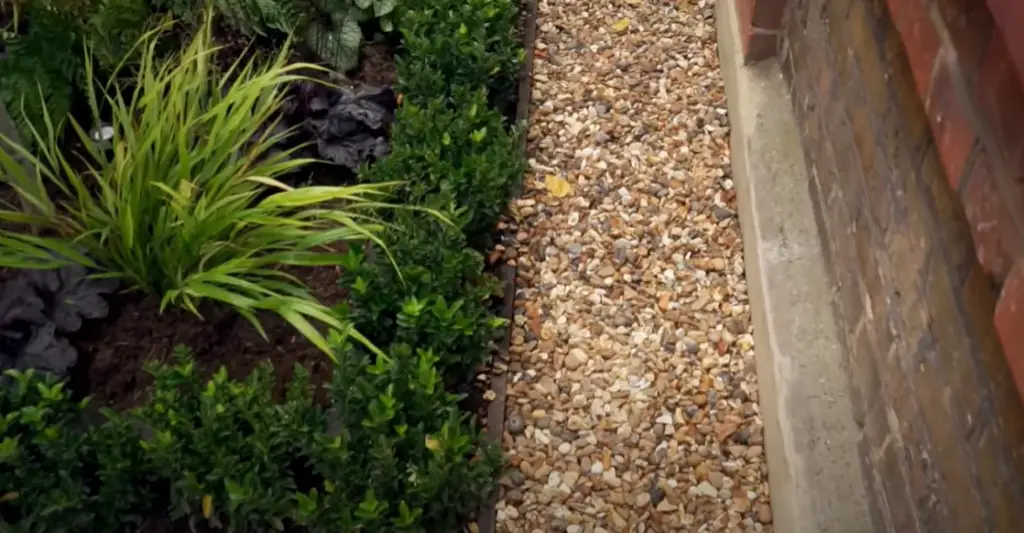
Annuals: Adding annual flowers to your front garden is an easy way to add continuous color. Popular choices include petunias, marigolds, impatiens, and snapdragons.
Perennials: Planting perennial plants in the front yard will give you a beautiful display year after year. Popular options are daisies, irises, daylilies, hostas, and sedums.
Groundcovers: Groundcover plants provide a low-growing layer of foliage that can fill empty space between larger plants or act as a living mulch in areas where grass won’t grow. Options include pachysandra, creeping phlox, and liriope.
Grasses: Ornamental grasses can add texture to your garden while providing a low-maintenance ground cover that is drought tolerant. Popular choices include fountain grass (Pennisetum alopecuroides), purple muhlygrass (Muhlenbergia capillaris), and Japanese forest grass (Hakonechloa macra).
No matter what type of plants you choose for your front garden, make sure they are suitable for the amount of sun or shade in the area. Also, consider how much maintenance you are willing to do and look for plants that will thrive with minimal care. With careful planning and selection, you can create a beautiful front garden that will enhance the look of your home [4].
What do you need to create a great front garden?
Creating a great front garden means you need to plan and design carefully. You’ll need to consider the type of plants, flowers, shrubs, and trees you want in your garden. Depending on the size of your garden, it is also important to think about how much space you have available for different elements such as pathways, seating areas, or water features.
You may want to incorporate some hard landscaping such as paving or decking into your design too. Adding furniture such as benches or chairs can help create an inviting area for entertaining guests or spending time outdoors with family and friends. Lighting features like solar lights can provide a welcoming atmosphere at night too.
By taking into account these considerations, you will soon have a beautiful and inviting front garden to enjoy year-round!
FAQ
How do you decorate a small front lawn?
Decorating a small front lawn can be a challenge, but with a little creativity and planning, it can be done. Here are some tips for decorating a small front lawn:
- Think about your overall theme or look you are trying to achieve. Decide on one main focal point and keep the rest of the decorations simple and complementary.
- Plant shrubs, flowers, and trees that will add texture and color to your space. Small evergreens work best for smaller spaces since they don’t take up much room.
- Add accents like birdbaths, statues, or another garden décor to make the area more inviting and interesting. Be sure not to overcrowd your space though!
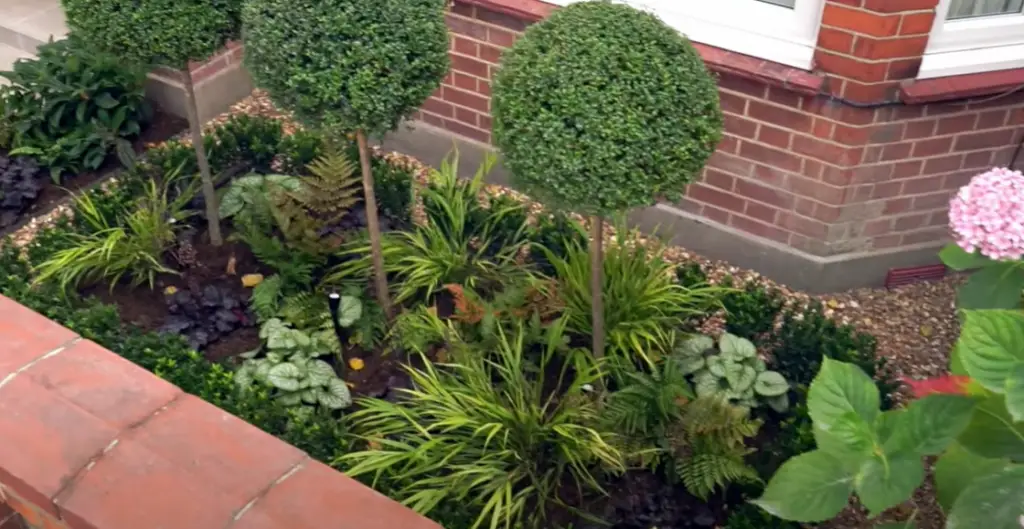
What is best for a small front garden?
The best plants for a small front garden are those that don’t require much maintenance and can thrive in the area. Some great choices include:
- Ground cover, such as creeping thyme or sedums, which can help fill space quickly and keep weeds out.
- Perennials, such as daylilies, daisies, and forget-me-nots, add color and texture each season.
- Low-growing shrubs like boxwoods and yews which will provide structure while staying low to the ground.
- Vines or climbing plants, like clematis or ivy, which can be trained up trellises or arbors to create vertical interest in your garden.
How do you make a small garden stunning?
Making a small garden stunning can be done by adding a few simple elements. Here are some ideas to help you create an eye-catching, yet low-maintenance garden:
- Choose plants that will bring texture, color, and interest to the space. Select unique foliage or plants with an interesting shape or fragrance.
- Incorporate a variety of heights, such as taller trees in the back and shorter shrubs in the front, to give your garden depth and dimension.
- Add pops of color with bright flowers throughout the year. Try mixing perennials and annuals for more color variation.
- Install decorative lighting or hang string lights to make your garden glow at night.
- Bring it all together with a walkway or seating area to make the most of your space.
- Add unique garden décor, such as birdhouses or sculptures, to create an inviting atmosphere.
How do you maximize space in a small front garden?
Maximizing space in a small front garden can be done with careful planning and the right plants. First, focus on plants that don’t require a lot of maintenance and can fit in your space. Install small trees, shrubs, perennials, or ground cover to create texture and visual interest while saving room. Incorporate vertical elements such as trellises or arbors with climbing vines for additional height. Finally, be sure to leave enough space for a path or seating area so you can fully enjoy your garden.
How do I landscape a small front yard for low maintenance?
Landscaping a small front yard for low maintenance involves selecting the right plants and creating an easy-to-care-for design. Start by choosing drought-tolerant plants that don’t require much water or fertilizer. Incorporate perennials, evergreens, ground cover, and other hardy plants to give your garden color without needing frequent maintenance. Install mulch around plants to reduce weeds and help them retain moisture. Finally, incorporate pathways and seating areas so you can fully enjoy your outdoor space without having to do much upkeep.
How do you make a small front garden look nice?
To create a small front garden that looks nice, start with the basics. Choose a few plants that will bring color and texture to your space, like perennials or low-growing shrubs. Make sure there is enough room for a path or seating area so you can enjoy your outdoor space. Incorporate vertical elements such as trellises or arbors with climbing vines to add height and interest. Finally, add accents like birdbaths, statues, or another garden décor to make the area more inviting and inviting.
What colors make a small front garden look bigger?
Colors that can make a small front garden look bigger include light and bright shades such as pastel yellows, blues, and pinks. Soft whites, creams, and beiges can also help to open up the space. You can also opt for bold hues such as reds or deep purples to create an eye-catching center of attention within your landscape. Finally, just remember to incorporate plenty of green plants in all shapes and sizes to add texture, depth, and life to your garden.
As you plan your small front garden, consider using complementary colors to tie everything together and make it look more cohesive. That way you’ll have a beautiful space that looks larger than it is!
How do you make a small garden on a budget?
Creating a small garden on a budget requires careful planning and the right plants. Start by researching which plants will work best in your climate and select those that don’t require much maintenance or expensive upkeep. Shop around for deals at local nurseries, farmer’s markets, or online vendors to get good prices on plants and supplies. Incorporate vertical elements such as trellises or arbors with climbing vines to add height without taking up too much space. Finally, opt for DIY projects whenever possible like making stepping stones or building planter boxes out of wood pallets.
How do I plan my front garden?
Planning your front garden involves deciding on which plants you want to include and creating a design that is pleasing to the eye. To start, research drought-tolerant plants native to your area since they won’t require as much maintenance or water. Consider incorporating perennials, evergreens, ground cover, and other hardy plants for color without any additional upkeep. Incorporate vertical elements such as trellises or arbors with climbing vines for added height and interest. Decide on whether you want a path or seating area in your space so you can fully enjoy it. Finally, add unique garden décor such as birdhouses or sculptures for an inviting atmosphere.
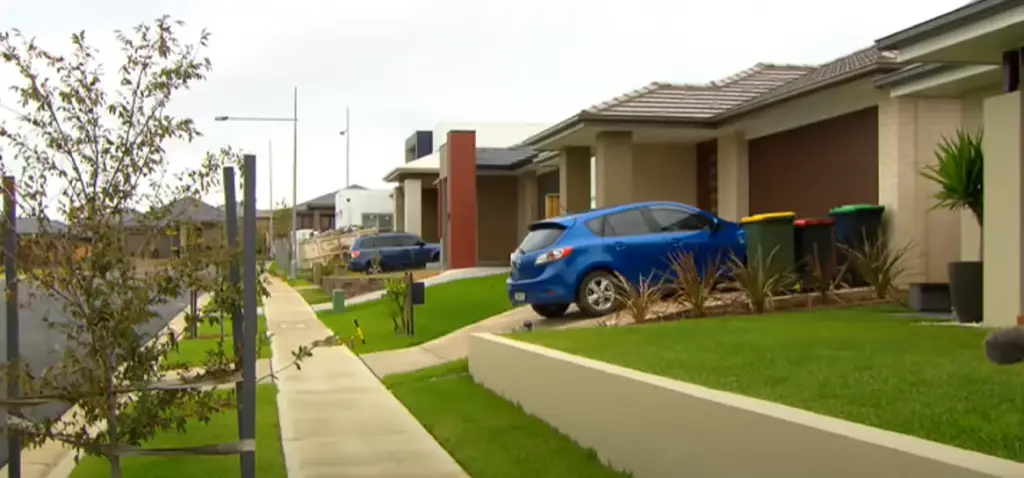
What is a mini garden called?
A mini garden is also known as a fairy garden, miniature garden, or pocket garden. These gardens are typically small and contain tiny plants, figures, furniture, and other decorations that create a whimsical atmosphere. Mini gardens can be placed in containers indoors or outdoors to give you an escape from daily life. They are perfect for those with limited space since they don’t require much room and still provide a tranquil atmosphere.
What is a pocket garden?
A pocket garden is a type of mini garden that is designed to be enjoyed in a small space. These gardens are typically planted in containers, window boxes, or other small spaces and usually contain miniature plants and decorations. Pocket gardens can be placed indoors or outdoors and require minimal upkeep. They offer an escape from the everyday hustle and bustle while still providing beauty and peace.
What plants are good for a front garden?
When selecting plants for your front garden, choose those that will bring color and texture to your space such as perennials, evergreens, shrubs, annuals, and ground covers. Opt for drought-tolerant plants native to your climate since they won’t require as much maintenance or water. Incorporate plants with different blooming times so you’ll have a vibrant garden throughout the year. Consider adding climbing vines to trellises or arbors for added height and interest. Finally, add unique garden décor such as birdhouses or sculptures for an inviting atmosphere.
What colors should I use in my front garden?
When selecting colors for your front garden, choose shades that will make your space look larger and brighter. Opt for light and bright shades such as pastel yellows, blues, and pinks to open up the area and make it feel more spacious. Soft whites, creams, and beiges can also help create a calming atmosphere while bold hues like reds or oranges can add a pop of color. Incorporate different shades and textures for interest, or choose one color palette to bring unity to your garden space.
Useful Video: TOP 20 Beautiful Small Front Garden Design Ideas
Conclusion
Very small front gardens are an important part of urban living. They provide a sense of personal space and connection to the natural world that many people find comforting and restorative. Additionally, small front gardens can help to reduce carbon emissions and improve air quality in cities by providing shade, reducing rainwater run-off, and helping to mitigate the heat island effect. Furthermore, they add beauty to neighborhoods and may even contribute to increased property values. Creating a small front garden is a great way for homeowners to add value to their homes while also benefiting the environment at large. With careful planning and thoughtful design, even a limited outdoor space can become both beautiful and functional – resulting in a truly successful small front garden.
References:
- https://www.gardenersworld.com/plants/designing-a-front-garden/
- https://www.homesandgardens.com/ideas/small-front-garden-ideas
- https://themicrogardener.com/ten-tips-for-creating-beautiful-gardens/
- https://www.rhs.org.uk/plants/for-places/front-gardens





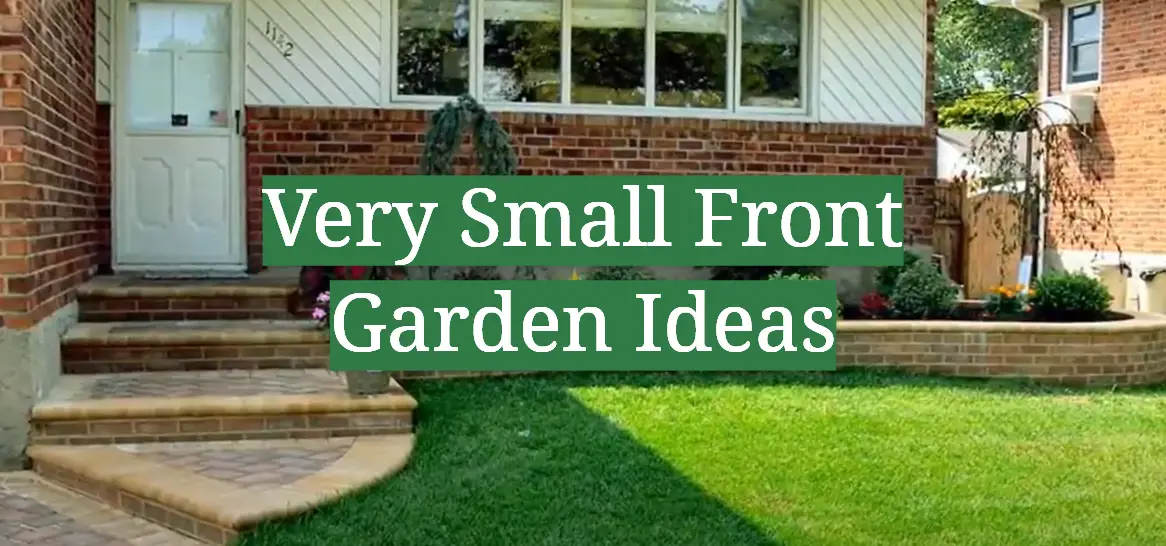




Leave a Reply
View Comments